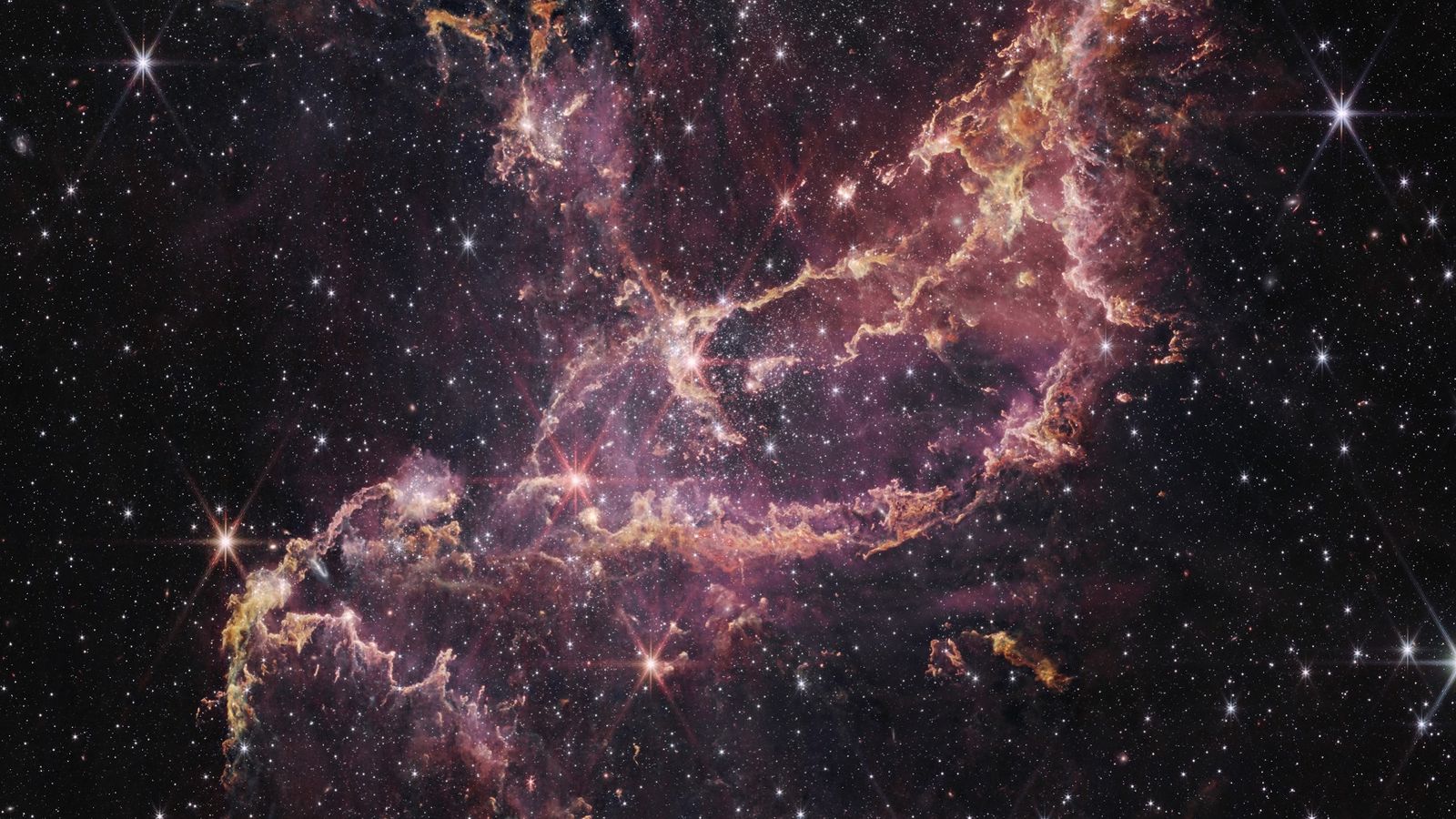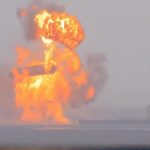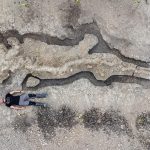A new image taken by the James Webb Space Telescope offers insights into how the first stars formed in the early universe more than 10 billion years ago.
The image shows a cluster of stars known as NGC 346, which is more than 200,000 light-years away from Earth.
It has become of interest to astronomers because it resembles the conditions of the early universe, and through studying the region they hope to learn more about how the first stars formed two or three billion years after the Big Bang.
This period, known as the “cosmic noon”, was when star formation was at its peak.
“We’re seeing the building blocks, not only of stars but also potentially of planets,” said Guido De Marchi, of the European Space Agency, and a co-investigator on the research team.
He added that it is a possibility that “rocky planets” may have formed in the universe earlier than first thought.
The NGC 346 houses protostars which are clouds of gas and dust that are developing into stars. As the star develops, material collects into a disk that feeds the central star.
Read more science and tech news:
British investor who lost £1m in FTX collapse among 13 people to make reports to police
Cornwall wasn’t the only one – six other failed launches that show space travel is hard
Britain is a big part of the new space race – and could become a global launch pad
Olivia Jones, a fellow at the Science and Technology Facilities Council (STFC) UK Astronomy Technology Centre and lead author on the upcoming paper, said that the high resolution pictures taken by the telescope have provided scientists with far more data.
“This is the first time we can detect the full sequence of star formation of both low and high mass stars in another galaxy, offering us new information on how the birth of stars shapes their environment and even greater insight into the star formation process.”
The James Webb Space Telescope, which is the world’s most powerful, was launched over Christmas in 2021, with the hope that experts would be able to look back to the beginning of time when stars and galaxies were formed.
In July last year the telescope captured images of Neptune, the solar system’s outermost planet, and its rings.






















